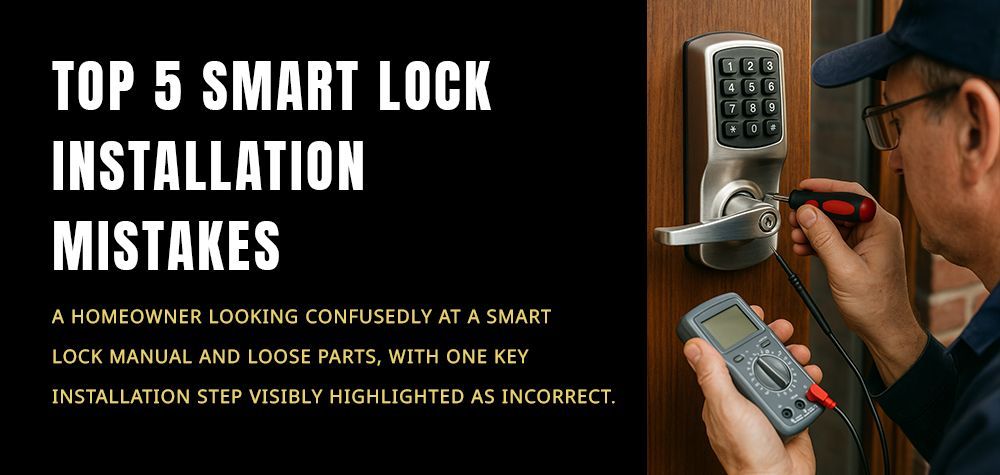How to Install a Cam Lock: A Comprehensive Guide
Cam locks are an essential component in securing cabinets, lockers, and drawers, providing both convenience and safety. Whether you're upgrading an old lock or setting up a new installation, the process might seem daunting at first. However, with the right tools and a clear guide, installing a cam lock can be straightforward. This article takes you through the detailed steps, explores what cam locks are, why they’re valuable, and the different types available, ensuring you’re well-equipped for the task.
How to Replace a Mailbox Lock?
Cam Lock Installation Step-by-Step Guide
What to Prepare
Before diving into installation, preparation is key. Gather the necessary tools, including a drill, a correctly sized drill bit (matched to the cam lock), a screwdriver, and a measuring tape. Double-check the cam lock kit to ensure all components, such as the body, cam plate, and fasteners, are present.
Step 1: Measure for the Cam Lock
The first step is determining where the cam lock will be installed. Measure the thickness of the material (e.g., a cabinet door or drawer front) and confirm the size of the hole required for the lock body. Most cam locks include measurements in their specifications, ensuring you drill the correct diameter. Mark the spot where you’ll place the lock carefully, as accuracy here determines the lock’s functionality.
Step 2: Drill the Hole
Using a drill and the appropriately sized bit, create the hole where the cam lock will be inserted. Ensure you’re drilling straight and steady to avoid splintering the surface or creating an uneven hole. Once drilled, clean the area to remove debris, ensuring the lock body fits snugly without obstruction.
Step 3: Install the Body
Insert the main body of the cam lock through the drilled hole. From the backside, secure the lock body using the included nut or fastener. Tighten it firmly with a wrench or screwdriver, ensuring it doesn’t wobble or shift. Proper installation of the lock body is crucial for smooth operation and security.
Step 4: Attach Cam Lock Connectors
With the lock body securely in place, attach the cam plate—the flat or curved metal piece that turns to secure the lock. Position the cam plate correctly based on whether the lock will rotate clockwise or counterclockwise to lock. Secure it using the provided screws or fasteners, ensuring it’s firmly in place.
Step 5: Test the Lock
Once the cam and connectors are installed, test the lock thoroughly. Insert the key or engage the mechanism to confirm smooth operation. The cam should rotate without resistance and lock securely into place. If any issues arise, adjust the connectors or recheck the body’s alignment for better functionality.
What is a Cam Lock?
A cam lock is a compact, cylindrical locking mechanism commonly used in furniture, cabinets, mailboxes, and lockers. Its design allows for easy installation while providing a reliable layer of security. When the key is turned, the cam—a flat or curved piece of metal—rotates to lock or unlock the item. Cam locks are versatile and can be found in various styles, from keyed options to handle-integrated designs, making them suitable for both residential and commercial use.
Why Should You Install a Cam Lock?
The primary reason to install a cam lock is to enhance security. Whether protecting valuables in a drawer or ensuring sensitive documents remain confidential, a cam lock offers a simple yet effective solution. It’s also an excellent way to upgrade outdated or malfunctioning locks. Beyond security, cam locks contribute to organizational convenience, ensuring items stay where they belong while providing peace of mind.
Types of Cam Locks
1. Keyed Cam Locks
These are the most common type of cam locks and require a key to operate. They are widely used in cabinets, drawers, and lockers due to their reliability and straightforward operation.
2. Keyed Cam Locks with Handles
This type integrates a handle with the locking mechanism, combining security with user-friendly design. Ideal for situations where frequent access is required, such as storage units or office cabinets.
3. Keyless Cam Locks
A modern alternative to traditional keyed locks, these use combination dials or electronic mechanisms. They eliminate the need for keys, making them a popular choice for shared or high-traffic areas.
FAQs
Q: Can I install a cam lock without a drill?
A: It’s challenging but possible if the material already has a pre-drilled hole. However, drilling is generally required for a secure fit.
Q: Are cam locks universal?
A: While many cam locks share similar dimensions, they aren’t universally interchangeable. Always check compatibility with your furniture or cabinet.
Q: How secure are cam locks?
A: Cam locks are effective for basic security needs, but for higher security, consider models with advanced features like tamper-resistant designs or reinforced materials.
Conclusion
Installing a cam lock may seem technical, but with the right approach and tools, it’s a task you can confidently tackle. Cam locks are a practical addition to enhance security and organization, whether for personal use or in commercial settings. By understanding the steps involved, types of cam locks, and their benefits, you ensure your belongings remain safe and accessible. Take the time to measure, drill accurately, and test thoroughly for a smooth installation process. Whether you’re upgrading your home or outfitting an office, cam locks are a small yet impactful way to improve security.
Call Us Any Time!







